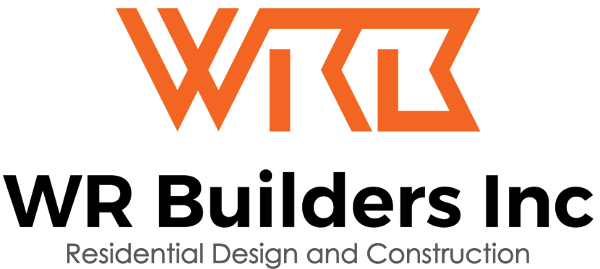Written by:
Richard Lisondra Lisondra

Subcontractors play a vital role in delivering high-quality work on schedule and within budget. Yet, juggling tight deadlines, intricate designs, and ever-changing regulations can be challenging—even for seasoned professionals.
The good news? Cutting-edge technologies are revolutionizing construction project management, making it easier to stay organized and efficient. Explore 10 essential strategies to harness innovative tools and make technology your greatest asset in 2025.
1. Streamlined Work Distribution
No one can do everything alone, which is why mastering the art of delegation is crucial. Effective delegation goes beyond simply assigning tasks—it’s about ensuring team members have the knowledge and skills to execute them successfully.
Without a streamlined system for delegating, tasks can quickly pile up, leaving team members unsure of priorities amidst lengthy to-do lists. This lack of clarity can result in missed deadlines, redundant work, or even safety hazards.
Automation tools simplify delegation by enabling task assignments, progress tracking, and notifications upon completion. Additionally, augmented reality (AR) systems provide workers with detailed virtual guides, minimizing confusion and ensuring tasks are done right the first time.

Construction and Development
Read more: 10 Essential Strategies to Master Construction Management in 20252. Proactive Project Scheduling
Ineffective planning is often the root cause of project delays and budget overruns. Without a well-defined roadmap, staying on track can become a major challenge.
Leveraging technology like project management apps can revolutionize your approach to planning. Emerging trends such as IoT-integrated smart cities, 3D printing, and green construction offer subcontractors advanced tools to create precise timelines, manage budgets, and monitor resources in real-time.
Digital scheduling platforms provide a centralized way to track progress, ensuring all stakeholders stay aligned. These tools make it easy to adjust plans as needed, helping you meet deadlines and keep projects on schedule.
3. Efficient Time Utilization
Time management is a common challenge in construction projects, often caused by miscommunication, poor scheduling, or inefficient progress tracking. To address these issues, tools like time-tracking software and drones for site analysis offer practical solutions.
Time-tracking software helps monitor worker hours in real-time, reducing overtime costs and ensuring projects stay on schedule.
Additionally, drones equipped with advanced imaging technology provide highly accurate aerial surveys, allowing project managers to track progress efficiently without the need for time-consuming manual site inspections.
4. Structured Contract Management
Keeping track of critical documents, such as project contracts, is essential throughout the construction process. Carefully reviewing these documents ensures you fully understand the obligations, project specifications, and scope of work. Overlooking important details can result in errors, disputes, or costly delays.
Building Information Modeling (BIM) plays a key role in managing contract documents efficiently. BIM provides detailed 3D models of the project, showcasing architectural, structural, and mechanical components. This technology enables a clearer and more precise understanding of the project, helping to minimize execution delays and avoid miscommunications.
5. Clear Communication
A clear communication plan is vital to a project’s success, with studies showing it contributes to at least 70% of timely project completion. Without effective systems, messages can easily be lost, misunderstood, or overlooked, leading to delays and costly mistakes.
Collaboration tools play a key role in improving communication by enabling real-time interactions. These platforms streamline tasks like file sharing and direct messaging, reducing the risk of miscommunication among teams.
In addition, AR/VR technologies provide immersive, interactive experiences where teams can virtually walk through project designs. This allows stakeholders to better visualize and communicate their ideas, leading to fewer misunderstandings and smoother execution during construction.
6. Automated Digital Systems
Modern challenges require modern solutions, and success in today’s construction industry hinges on embracing digital tools. Manual processes are often time-consuming and susceptible to human error. By transitioning to digital construction management systems, you can streamline operations and meet the demands of modern projects.
Cloud-based platforms enable efficient document storage, real-time processing, and seamless collaboration with stakeholders, regardless of location. This not only boosts productivity but also ensures accuracy and improved project outcomes.
7. Effective Negotiation Tactics
Subcontractors often find themselves in the challenging position of negotiating between general contractors and suppliers. Without accurate data, securing favorable pricing or terms can be difficult, putting you at risk of cost overruns or thin profit margins.
Data analytics and cloud-based project management tools can equip you with a comprehensive view of costs, timelines, and labor requirements. By gaining a deeper understanding of labor costs, material price fluctuations, and potential risks, you can enter negotiations with precise figures, enabling you to make more informed decisions.
Imagine being able to present a general contractor with data-backed evidence of how a proposed material substitution could save both time and money. This approach shifts the power dynamic, positioning you as a strategic partner rather than a passive participant in the project.
8. On-Site Visibility
There is often a disconnect between what’s happening on-site and what’s being communicated to contractors and clients. This lack of visibility can result in misaligned expectations and costly errors that are difficult to fix.
Internet of Things (IoT) technology helps bridge this gap by offering real-time insights into on-site activities. Sensors placed on equipment monitor usage, maintenance needs, and overall efficiency, while wearables can track worker safety and productivity. Imagine the convenience of receiving alerts if the equipment is overheating or if workers exceed safe vibration exposure levels while using tools.
While this technology is invaluable for leading your team, being physically present on-site remains one of the most effective ways to connect the dots. When combined with efficient technology, this hands-on approach enables you to assess productivity, monitor safety conditions, and identify challenges early on—before they become disruptive to the project.
9. Cost Optimization
Razor-thin margins are often a reality in your role, and even with extensive experience, it’s essential to optimize project costs effectively. Unexpected expenses, such as material price increases or overtime wages, can quickly erode profitability. Relying on manual tracking makes it difficult to predict or control the financial flow. This is where AI-powered tools and automated cost-management systems come into play.
Advanced financial tools can automatically flag potential budget overruns and provide real-time updates on predicted expenses. By leveraging predictive analytics, these tools forecast future costs based on past project data, allowing you to allocate resources more efficiently. Artificial intelligence (AI) also supports managing the supply chain and logistics, helping you avoid costly overtime.
AI can identify more affordable suppliers without compromising on quality and suggest schedule adjustments to avoid unnecessary overtime expenses, ultimately preserving your project’s bottom line.

10. Workplace Safety Focus
Construction sites remain one of the most dangerous workplaces, and as a subcontractor, you’re often held responsible for the safety of your crew. Accidents can lead to legal liabilities and tarnish your reputation, both of which you want to avoid. Research from Focus Four reveals that incident fatality statistics are still alarmingly high—falls account for 35% of deaths, struck-by incidents at 17%, and electrocution at 7.6%. All of these can be prevented by adhering to workplace safety laws and conducting routine testing to identify risks and faulty systems.
Embracing smart safety technologies can significantly enhance workplace safety. Wearable devices, such as safety vests with built-in sensors, can track workers’ heart rates and environmental conditions, providing real-time alerts to supervisors about potential risks. For example, if a worker’s wearable device detects excessive heat exposure, it immediately notifies the supervisor. Adopting such technologies demonstrates your commitment to safety and boosts your credibility with contractors.
In 2025, the construction industry will continue to evolve, and subcontractors must stay ahead of the curve to remain competitive. Managing costs, meeting deadlines, and ensuring worker safety are already significant challenges. However, with the right approach and tools, you can turn these challenges into opportunities.
Embrace Technological Advancements
Integrating data analytics, IoT devices, AI tools, and smart safety technologies into your processes will provide a significant advantage. These technologies allow you to gain real-time insights into project performance, helping you make more informed decisions and improve efficiency across the board.
- Data Analytics will enable you to forecast costs, identify inefficiencies, and optimize resource allocation.
- IoT devices will allow you to monitor on-site activities, track equipment usage, and ensure safety standards are met.
- AI tools will assist with predictive maintenance, labor management, and supply chain optimization, ensuring that you stay on budget and on time.
- Smart Safety Technologies will enhance worker protection and minimize accidents, demonstrating your commitment to a safe work environment and improving your reputation with contractors.
By leveraging these technologies, you not only streamline operations but also increase your credibility as a forward-thinking, efficient subcontractor. This helps you attract more clients and maintain strong relationships with general contractors.
Stay Ahead with Continuous Learning
The construction industry is rapidly evolving, and to maintain a competitive edge, continuous learning is key. Stay updated on industry trends, new technologies, and best practices to keep improving your operations. This ensures that you can adapt quickly to changes in the market, offering more value to clients and contractors alike.
Focus on Sustainable Practices
Sustainability will continue to be a major factor in the construction industry. Subcontractors who embrace eco-friendly practices, from reducing waste to using energy-efficient materials, will not only help the environment but also meet the growing demand for green building projects. Sustainable practices can give you a competitive edge by attracting clients who prioritize environmentally conscious solutions.
Build Strong Relationships
Networking and relationship-building remain essential for subcontractors. Building a reputation as a reliable, efficient, and tech-savvy partner will lead to repeat business and referrals. Keep an open line of communication with general contractors and clients, ensuring they trust your ability to deliver quality work on time and within budget.
Conclusion
To sharpen your competitive edge in 2025, embrace technological advancements, prioritize safety, and commit to continuous improvement. By doing so, you’ll be better equipped to navigate the challenges of the construction industry and thrive in a competitive, ever-evolving market.



